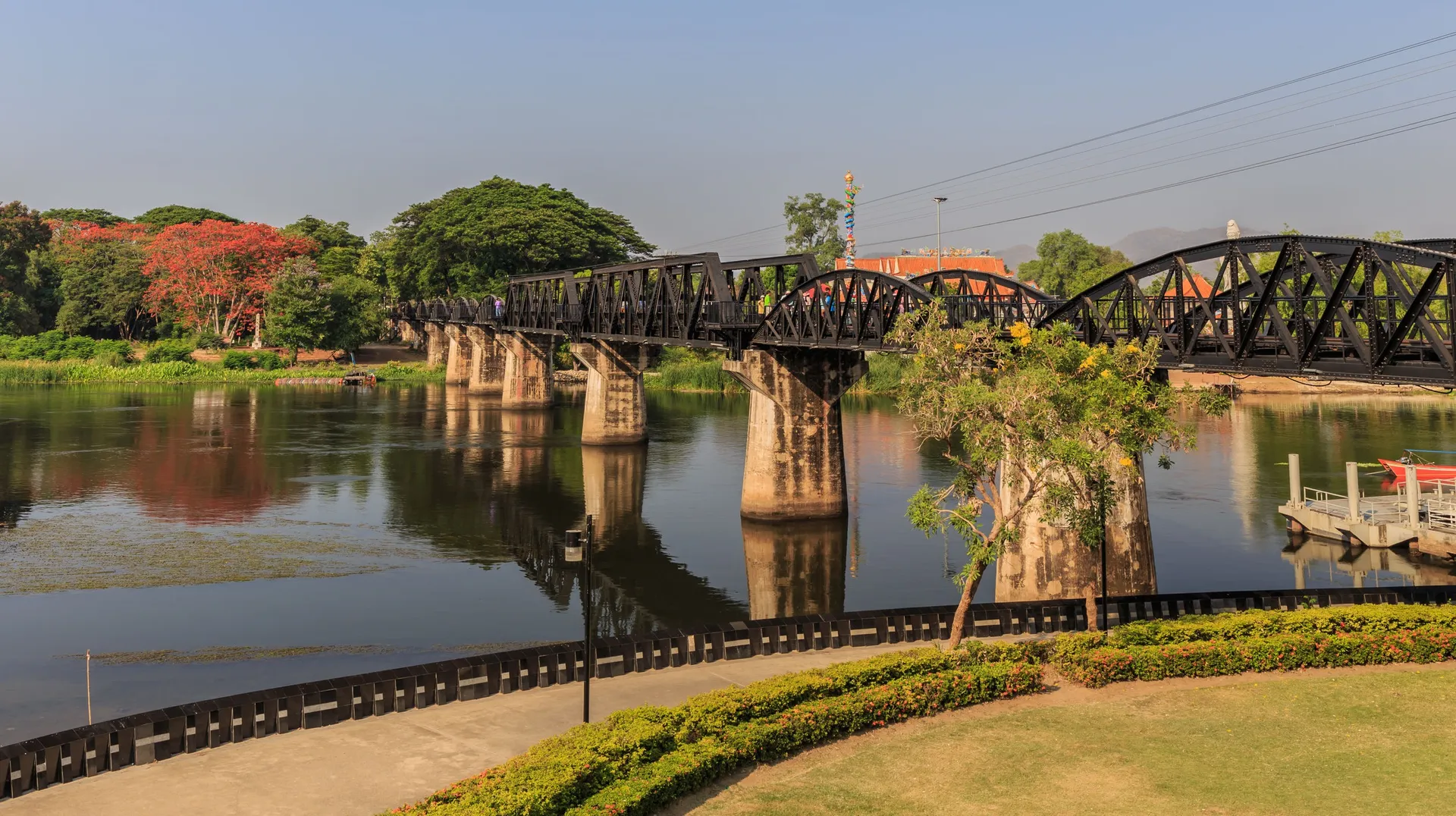- Travel Guides
- The Bridge on the River Kwai

The Bridge on the River Kwai
Anyone of a certain age will know these six words form the title to David Lean’s multiple Oscar-winning 1957 film, inspired by Pierre Boulle’s book. They tell the story of the infamous “Death Railway” linking Thailand to Burma, which was constructed by POWs and conscripted labourers in WWII – and consumed the lives of 100,000 people. The bridge is the focal point of the story and the symbol of the cruelty suffered by so many in the Japanese internment camps.
'Death Railway'
The construction of the 215-mile single-track railway involved some 60,000 prisoners of war (mainly British, Australian and Dutch) – plus three times as many Asian labourers who were often treated even more appallingly. A combination of heat, malnutrition, disease, starvation and torture made conditions intolerable, and by the end, an estimated 100,000 had died, including more than 6,000 British servicemen.
While the film brought this crime against humanity to the world’s attention, it also brought an unwelcome degree of commercialisation to the bridge itself. Nevertheless, to see it is a thought-provoking experience, made even more poignant by the sheer beauty of the surrounding countryside – lush and tropical, fringed with rugged, mountainous mystery.
Even more sobering experiences are provided by visits to the nearby Allied War Cemetery and the Death Railway Museum . The cemetery is where many of the 16,000 POWs who died building the railway are laid to rest. At the museum in Kanchanaburi the grim details are sensitively presented through a graphic assortment of photos, artifacts and memorabilia, with ample English descriptions, detailed maps and good audiovisual presentations.
Eric Lomax – The Railway Man
If anything uplifting can come from the grim saga of the Death Railway, it is the story of Eric Lomax, which was made into a successful film in 2013 called The Railway Man based on Lomax’s bestselling autobiography. As a 21-year old POW in 1942 who was a signals engineer and railway enthusiast, he was inevitably sent to work on the Death Railway. Like so many others he suffered unimaginable brutality, but unlike so many others he survived, just. Deeply scarred both physically and psychologically, he locked the trauma and the hatred for his tormentors inside. Decades later, and desperate for revenge, he discovers the whereabouts of the Japanese prison guard responsible for the worst of his treatment and sets out to confront him, but... what might have been a bleak narrative with no redeeming features, becomes a powerful and inspiring tale of heroism, humanity and the redemptive power of love.
It’s a story worth knowing, especially if you find the harrowing details of the Death Railway difficult to handle.


